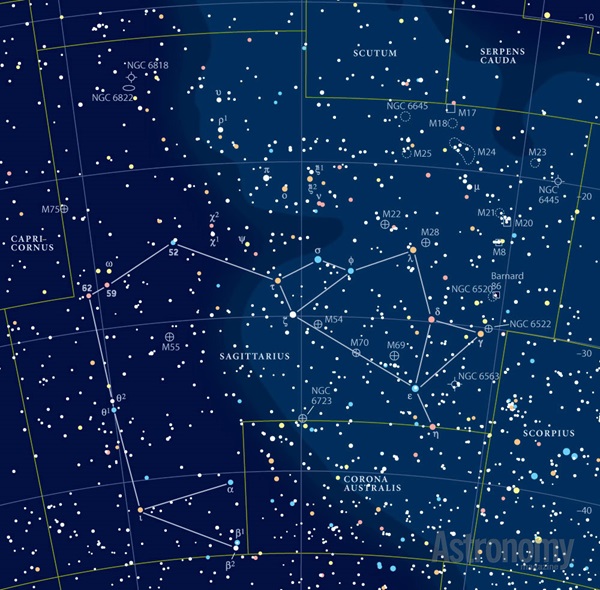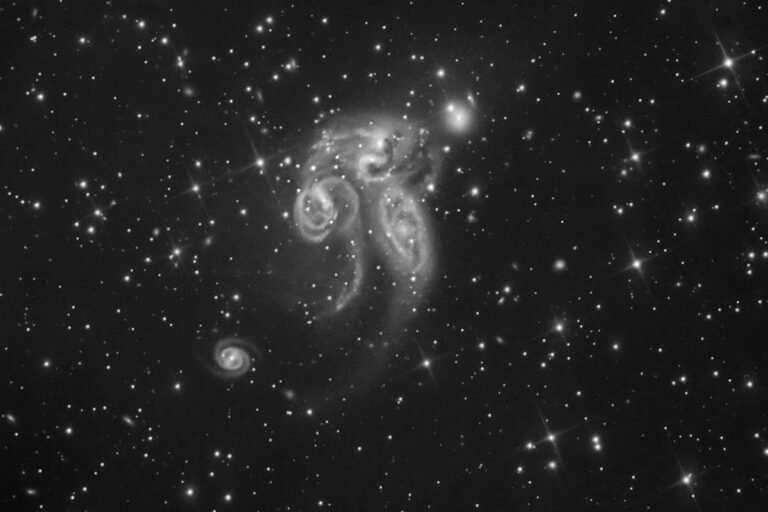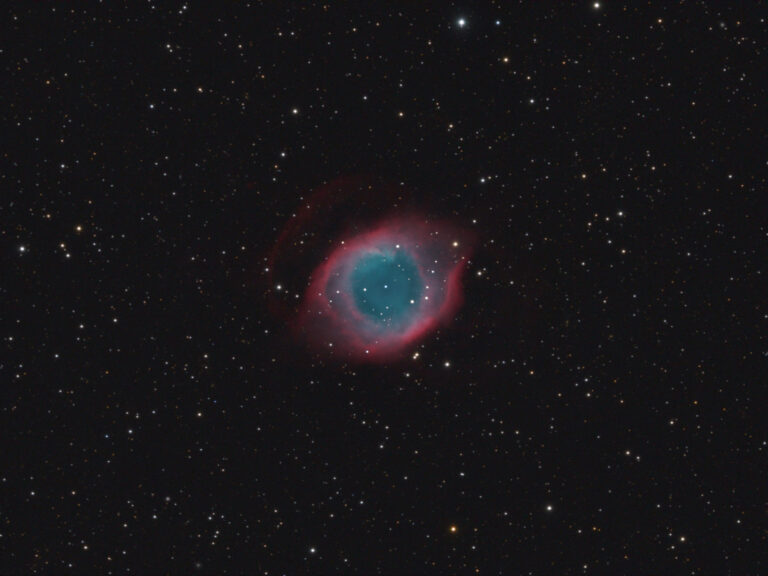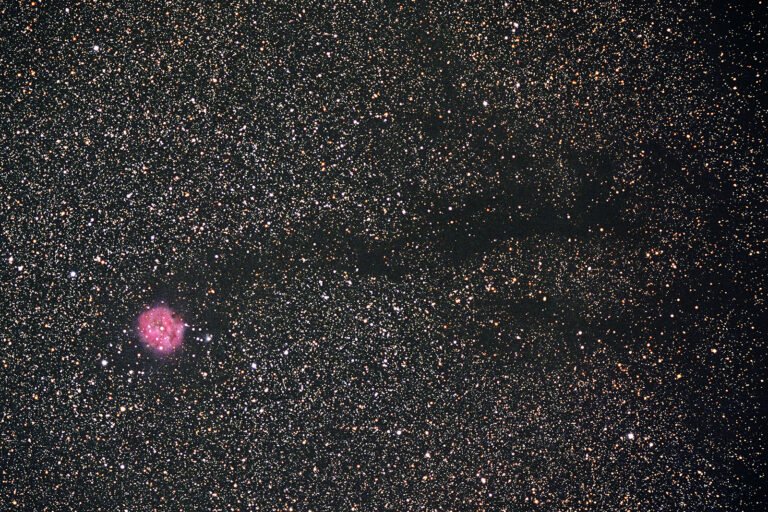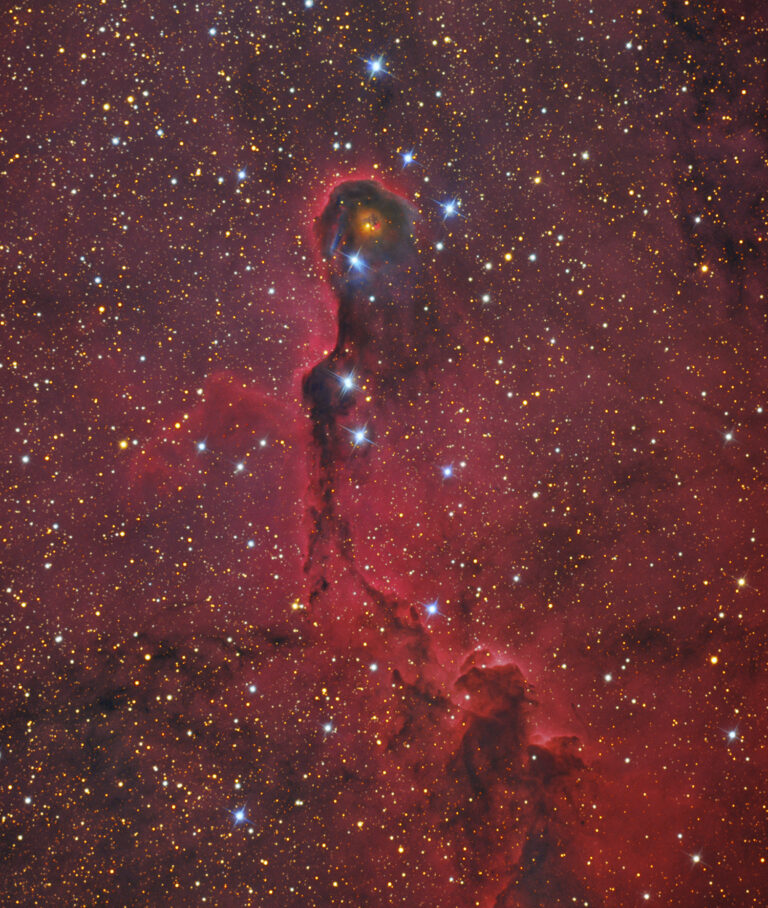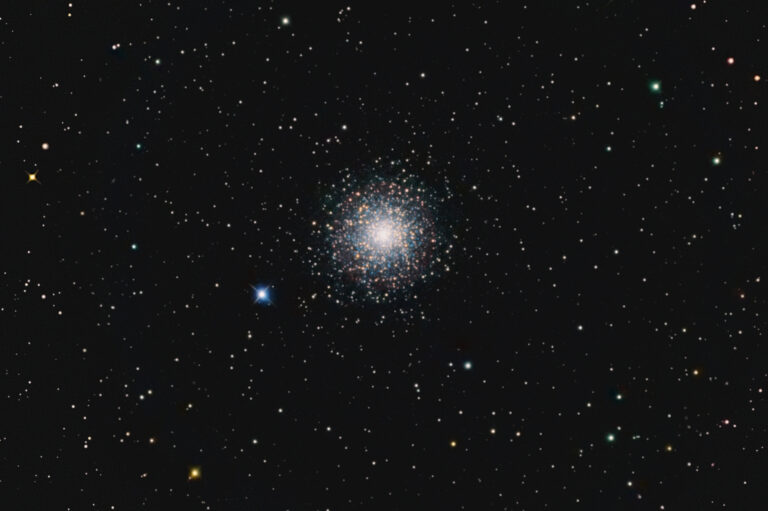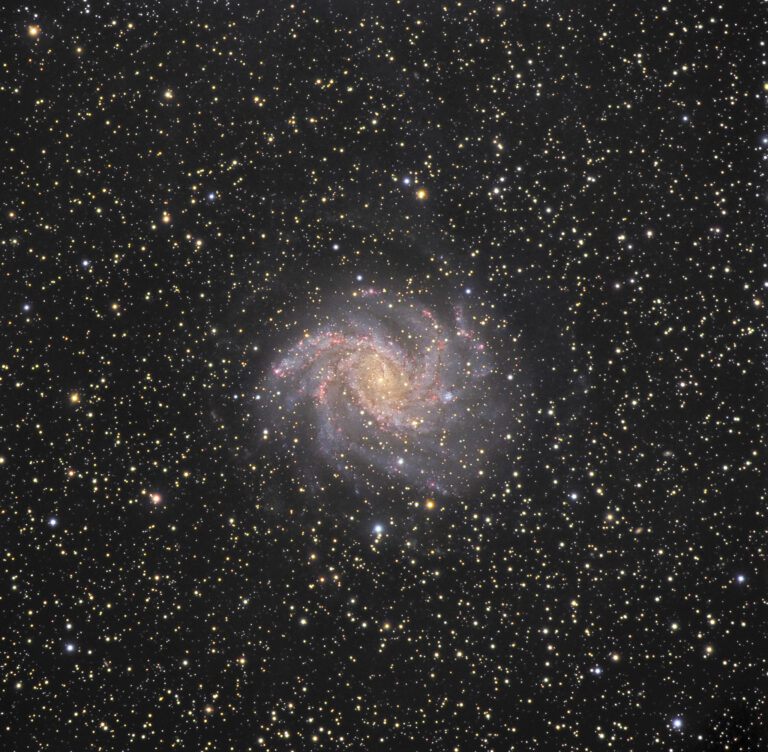Key Takeaways:
Targets for July 24–31, 2014
Naked eye and Binoculars: The Lagoon Nebula (M8)
Small telescope: The Trifid Nebula (M20)
Large telescope: The Southern Whirlpool Galaxy (M83)
This week’s naked-eye object is the Lagoon Nebula in Sagittarius. To find it, look 5.5° west of magnitude 2.8 Kaus Borealis (Lambda [λ] Sagittarii). Around 1680, English astronomer John Flamsteed discovered this nebula, which became the eighth object on Messier’s list — M8.
This deep-sky target is huge: It measures 45′ by 30′, an area 1.8 times that covered by the Full Moon. You’ll spot M8 with your naked eyes from a dark site, and you’ll be able to follow most of its nebulosity through a small telescope. The largest amateur scopes introduce many shades of gray to this object, and even an occasional pink tone.
Through a 4-inch scope, you’ll see the dark dust lane (the lagoon) that cuts M8 in half. On the eastern side of the rift, wispy gas surrounds three dozen stars of open cluster NGC 6530.
The brightest point west of the lane is the magnitude 5.9 star 9 Sagittarii, which is responsible for the nebula’s glow. A bit more to the west is M8’s core, a region of intense brightness. Look for the Hourglass Nebula, a star-forming region with lots of young stars.
A dual-purpose nebula
This week’s small-telescope target is the magnificent Trifid Nebula, a combination emission and reflection nebula Messier discovered in Sagittarius on June 5, 1764. You’ll find M20 1.4° north-northwest of the Lagoon Nebula, or 3.3° southwest of magnitude 3.8 Mu (μ) Sagittarii. The combined light of the Trifid Nebula’s glowing gas equals that of a magnitude 9.0 star, and it measures 20′ across.
The Trifid Nebula owes its common name to three dark dust lanes that converge in front of the bright emission nebulosity. Through a 4-inch telescope, look for a nice triple-star system just west of center. These three stars, and two more, provide the ultraviolet radiation that causes M20 to glow.
On the Trifid’s northern edge sits a reflection nebula, which shows up blue in photos. We see this region because it reflects the light of the magnitude 7.3 star SAO 186149 that sits at its center.
Spiral glory
This week’s large-telescope target is the Southern Whirlpool Galaxy — also known as M83 — in Hydra. French astronomer Nicolas Louis de Lacaille discovered M83 on February 23, 1752. It was the third galaxy discovered, if you don’t count the Magellanic Clouds. Only the Andromeda Galaxy (M31) and its companion M32 preceded M83. Charles Messier added it to his catalog March 18, 1781.
Dubbing a galaxy the “Southern Whirlpool” creates a lot of expectation visually. Fortunately, M83 doesn’t disappoint. Many observers rate this galaxy the finest barred spiral visible to northern observers. You can find it 7.2° west-southwest of magnitude 3.3 Pi (π) Hydrae.
M83 is one of the brightest members of a collection of some 14 galaxies called the M83 group. M83 shines at magnitude 7.5. The other notable object in this group is the radio galaxy Centaurus A (NGC 5128).
The Southern Whirlpool Galaxy appears nearly face-on, so you’ll see its spiral structure through telescopes with apertures as small as 6 inches. It measures 15.5′ by 13′, meaning it covers an area nearly 27 percent as large as the Full Moon. The core of M83 is small and round, and the bar extends to the northeast and southwest. Both spiral arms are easy to see, but the one that wraps southward from the bar’s northeastern end shows up better.
Through 11-inch and larger scopes, you’ll see large clumps of stars and star-forming regions along the arms. Instruments of this size and larger, along with M83’s brightness, allow you to use a nebula filter to reduce the brilliance of the galaxy’s stars, thus making the nebulous regions more apparent.
Expand your observing at Astronomy.com
StarDome
Check out Astronomy.com’s interactive StarDome to see an accurate map of your sky. This tool will help you locate this week’s targets.
The Sky this Week
Get a daily digest of celestial events coming soon to a sky near you.
Observing Talk
After you listen to the podcast and try to find the objects, be sure to share your observing experience with us by leaving a comment at the blog or in the Reader Forums.

